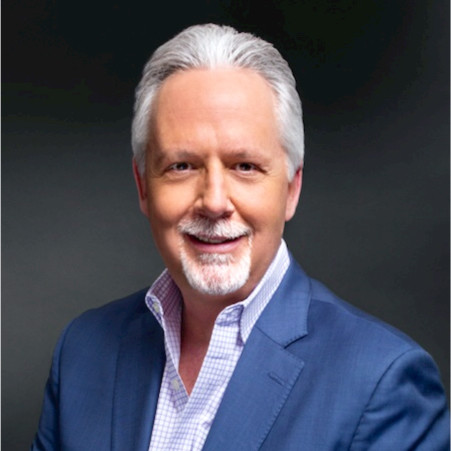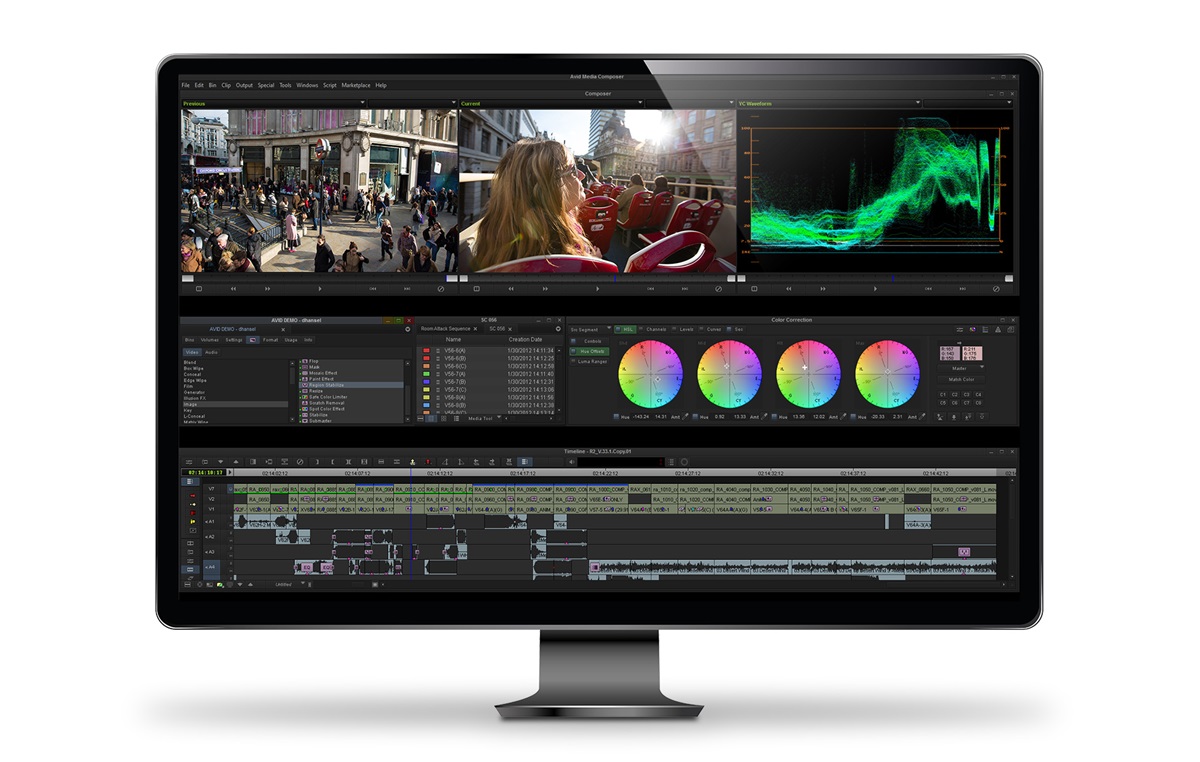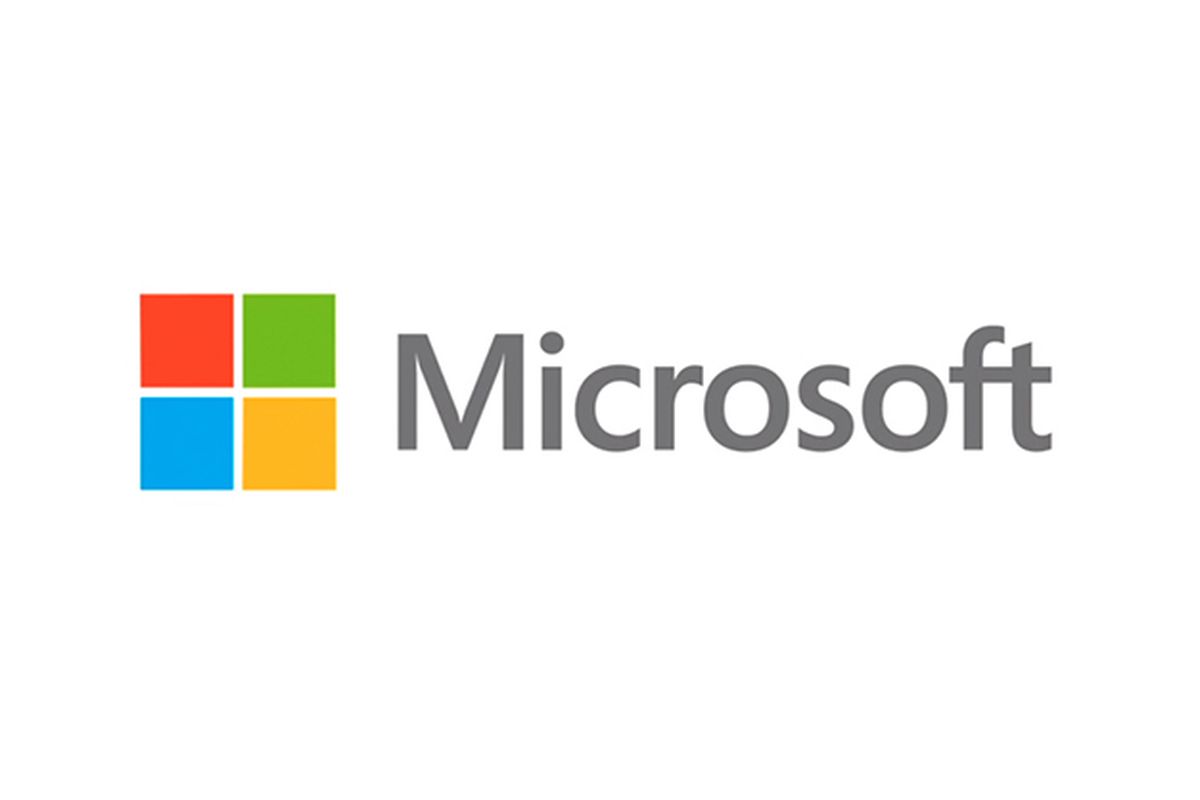What’s Next for Pro Tools? Talking with Avid CEO Jeff Rosica
If there was a honeymoon for Avid CEO Jeff Rosica, it was probably brief.
After all, when you ascend to the top spot of a publicly traded company following the abrupt departure of your predecessor, as happened for Rosica, there’s an especial need to hit the ground running. Named head of Avid in February, 2018, when former CEO Louis Hernandez, Jr., was terminated due to violations of Company policies related to workplace conduct, Rosica immediately had a job to do.
Actually, a whole lot of jobs, since being CEO of Avid means overseeing a diverse set of product lines for media, some of which come with category-killer status. Avid offers 11 primary solutions, spanning audio and video, to the content creation world including Pro Tools, Avid VENUE, Sibelius, Media Composer, Avid NEXIS, MediaCentral and more. Taken together, their value contributes to Avid’s market cap of $204.189 million at press time – not the world’s largest corporation, but one that’s no small responsibility to lead either.
A five-year veteran of Avid with the previous title of Senior Vice President, Chief Sales and Marketing Officer, Rosica came to the company following positions at Grass Valley, Thomson, and Philips Broadcast, consistently growing an executive profile primarily in the broadcast realm. Soon after Rosica’s appointment as CEO, a number of other executive officer and management roles were reshuffled, including the appointments of Ken Gayron as CFO & Executive Vice President, Jason Duva to the newly created role of Chief Legal and Administrative Officer & Executive Vice President, Dana Ruzicka as Chief Product Officer, Dave Perillo as Senior Vice President of Global Supply Chain Operations, Diana Brunelle as Chief Human Resources Officer & Vice President, and Tim Claman as Chief Technology Officer & Vice President of Product Management.
How will this new leadership team balance the needs of their two primary user groups – the audio-oriented one side, the visual types on another? How much of a priority is Pro Tools to Avid? To what degree is the company emphasizing Pro Tools hardware versus software? How is it ensuring that its customers’ needs are heard? Rosica tackled these questions and more in this conversation with SonicScoop.
Can you explain why there was a sudden change in leadership at Avid?
Back in February, the previous CEO Louis Hernandez, Jr. was terminated by our Board of Directors, and that was solely related to violations of our company policies around workplace misconduct. The company did take the situation very seriously and the board, I think, did a good job in making a decision quickly.
I was promoted to president of the company back in late 2016, so I was ultimately getting ready to become available to become the CEO. I joined the company in 2013 as head of worldwide field operations. I was a senior vice president when I joined, someone who’s been in the industry for over 30 years now. So, I know the industry, I know Avid extremely well, and I was here several years before being chosen by the Board to take over after Louis’ departure.
I took the first 100 days or so — even though I’ve been with the company for years — to analyze the company from a new vantage point, and really look at the executive team and the leadership team. So I did make a number of changes, all at once, of the senior leadership team here a little while ago. That was really just to line up, I guess you could call it, my leadership team for what I think the company needs moving forward.
How might the unexpected leadership change, in respect to Louis Hernandez, Jr.’s departure, affect continuity in terms of the focus on Avid community initiatives, Pro Tools development, and other programs that were launched during his tenure as CEO?
That’s a good question — I’ve been asked that before. The reality is that, while Louis maybe was often the person upfront talking about given initiatives, those really were initiatives of the company. The person who really has driven our Avid Customer Association is actually Keli Callaghan, and she has been someone who, from the first day, has been someone driving that, along with Dana Ruzicka, who is our chief product officer, and myself who were heavily involved from the beginning. The same thing is on our product strategies — these are all things that were really baked and formed within the company.
I’d say, first of all, as the new president and CEO, I plan on continuing to build a really strong company that will bring the customer community even more to the forefront of the company. And we’ll be executing, hopefully even better on our strategy, whether it be our platform strategy or our creative tools strategy. But we are going to have to navigate the opportunities better, and hopefully better align what we’re doing as a company to the needs of our customer base.
In fact, I would say that, if anything as an example in the pro audio space is that we’re going to probably be even double-downing on our focus around Pro Tools, and audio and music in general. As I’d mentioned about our hardware strategy, we’ve seen a lot of opportunity for the company that has been unfulfilled that I think we can do a lot with, quickly.
Pro Tools: What’s Next
What do you see that’s out there that you’re looking to attack?
Pro Tools is, by far, the most used digital audio workstation (DAW) out there, especially at the high end, and is obviously quite popular around recording and audio mixing. We will continue to innovate heavily around that area.
I’ll just say this for now: We have a lot of ideas around our creative tools strategy including Pro Tools, and you’re going to see, hopefully, an even faster continuous stream of innovation around that product.
Earlier this year, we put a lot of effort around music creation. That’s something that we’ve made some good progress on this year, but I think we have a long way to go as to really fulfill the needs of the music creation market. You’ll see a lot of progress from us in that regard.
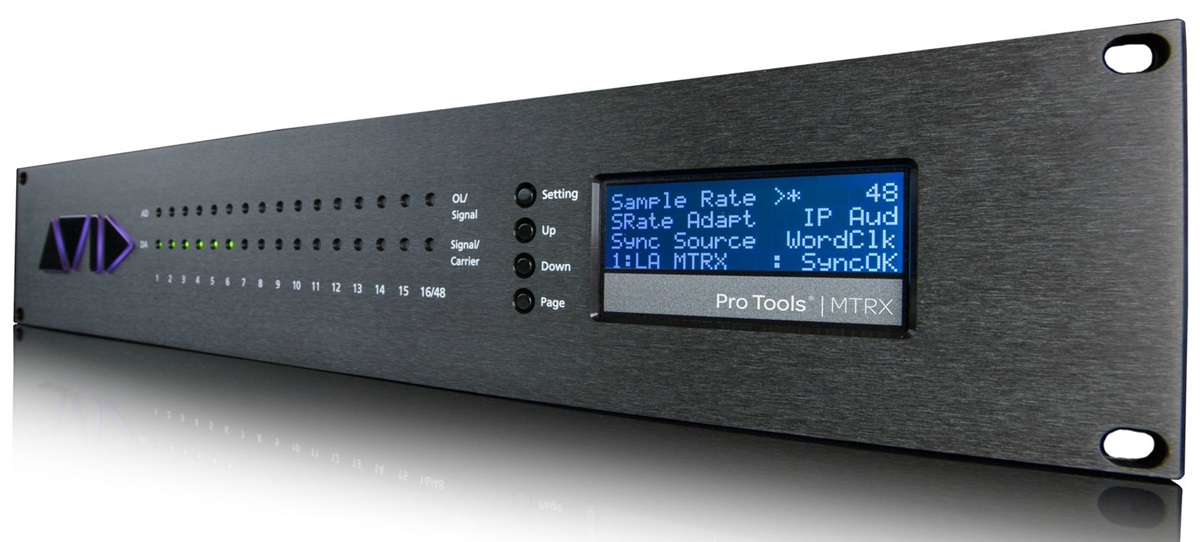
The MXTRX audio interface, with Digital Audio Denmark AD/DA converters, can deliver up to 384 kHz DSD audio.
Number two is, as I mentioned before, there are a lot of hardware interfaces, and a lot of IO and other types of hardware, that I think that we have a lot of opportunity in the market to bring some more innovation. We got a partnership [with Digital Audio Denmark] to deliver the Pro Tools | MTRX box, which I think has become one of the better high-end boxes to use around high-end Pro Tools rigs. I think that there is a lot of opportunity in that space going forward, we can fill a lot of gaps in the market and we can bring some new innovation around that.
There’s nothing we can announce yet, but I think the community’s going to see us executing pretty aggressively over the next 12-to-18 months. It did all start with Cloud Collaboration for Pro Tools which is an amazing tool set that keeps growing, that’s just a start for us.
We see lot of opportunity in helping the community more than we are today with a lot of tools to help connect people, allow them to collaborate, allow them to share, allow them to get their music or their work heard. We unveiled the Avid Connect app back at NAB, and that’s a way that we’re going to help make it even easier for people to find each other, or to find people to collaborate with or to get their work heard, or their work seen, depending on whether they’re in video or audio. Tools around the digital enablement of the community will be a big area that we’re going to innovate in.
Jeff, backing up a second to where you mentioned additional music creation tools, can you let me know specifically what you mean by that? Do you mean developing virtual instruments and soft synths? Or something else?
We’re going to do a lot of continuous innovation, to add capabilities to enhance or really create much stronger music creation workflows.
We’ve gotten on a model now where it’s continuous drops of software, it’s not just a big bang every year or two. We drop new features every couple of months, so now that people are either on a subscription or if they’re on a traditional license on the old program, they just get the new features as they drop every month or two.
Thank you for bringing up the subscription platform. What have you learned about offering Pro Tools as software, as a subscription since it was introduced in 2016? How has adoption taken off in ways that you expected, and what are some of the surprises and challenges you’ve encountered with that model?
I think one of the lessons that we’ve learned is that to be really crystal clear: A lot of people thought we had basically pulled the rug out from underneath them and went to subscription only. But that’s not true, we never have done that. Our view from the very beginning has been “be flexible.” If people want to buy it the traditional way that they’ve bought it for 25 years? Fine. We’ll keep offering that, but we added subscription options, added being the important word, to our price offering.
We never took away the traditional model. If people want to buy Pro Tools as a traditional license they can, and they use it forever. If they want the new features, they need to be on a program, or they can subscribe. And what we learned, also from subscription, is that subscription has created an opportunity for people who couldn’t afford to acquire Pro Tools because maybe it was just too much money upfront for them to buy a copy of Pro Tools. With subscription, it allows people to get into Pro Tools on a very low monthly fee or an annual, depending on what program they want to get on.
What we’ve found is it’s given people who always wanted to be on Pro Tools but thought they couldn’t afford it a more flexible and affordable option for their own situation. The fact is the fastest-growing product at Avid is Pro Tools subscription — of all the products we make, that’s the fastest growing product we have. The audio and music community have embraced it quickly.
The Pecking Order
Jeff, there are some among the community of Pro Tools users that feel that the audio division is of secondary importance to Avid, and that the Media Composer side gets more of the company’s attention. How would you address those concerns?
I’ve heard it, and I’ve actually heard that from almost every group [of both Pro Tools and Media Composer users]. I think every group thinks the other side gets more investments. But it really isn’t as simple as Pro Tools versus Media Composer — we have more than a dozen product families, and Pro Tools is actually a bigger business than Media Composer.
I do think what people see is that maybe the video side of the business is gaining more than the audio side of the business because the video side is bigger. But for us, the best analogy I can give is to Avid, they really are all our children, and we care about all of them very much. There have been times in the past where maybe the prior management teams didn’t put the right focus on it [Pro Tools]. I can assure the user base that the audio business, the music business is absolutely crucial to the company. And we’re investing in it at a very quick clip.
How do you see market conditions changing for the professional audio community? How are things evolving for this vertical?
I think it’s a great time to be an artist or an audio professional today because there’s so many avenues to get music heard, or get work heard or seen. With all the new streaming platforms, and all the new ways that people can connect, it really has changed everything. I know it has in some ways hurt some parts of the market, but I think overall when you step back and look at it, especially over a period of time, I think that now is a great opportunity to be an artist or audio professional.
What we see is so many more ways for people to distribute their content or get their work heard or seen. We think that it then creates a great opportunity for people to do that work. We’ve seen a lot of growth in the creative users, whether they’re artists or whether they’re audio pros working behind the scenes. We see a great opportunity for growth in this space and we’re seeing a lot of growth in this space as a company. I think that’s partially because the dynamics of the industry have changed so much and it’s been so much easier for people to really participate in the industry.
How people collaborate has always been kind of a basic tenet within Avid. It really represents what we want to do as a company. I think the changes in the market allow us to help the industry because of our brand and because of the position we hold. We’re looking at how we help people to connect and collaborate and be heard.
I know that’s a marketing pitch from us, but that’s actually how we feel: that it actually is about helping people connect, find each other, how they can collaborate in new ways, and then be heard, meaning, “How do we get them in the creative environment so they can get their work heard?”
Having Avid Cloud Collaboration was one of our first ideas to help people work together remotely, using the cloud basically as a remote sync. But now with the Avid Connect app, which we just unveiled back at NAB, and at [the event] Avid Connect, this is a free desktop and mobile app that we think is going to be really great to help people be able to find people to work with, how we connect them, how to message, how they work together and collaborate, and how they promote their work or their skills. It also brings together everything else so they can manage their software and the tools they’re using.
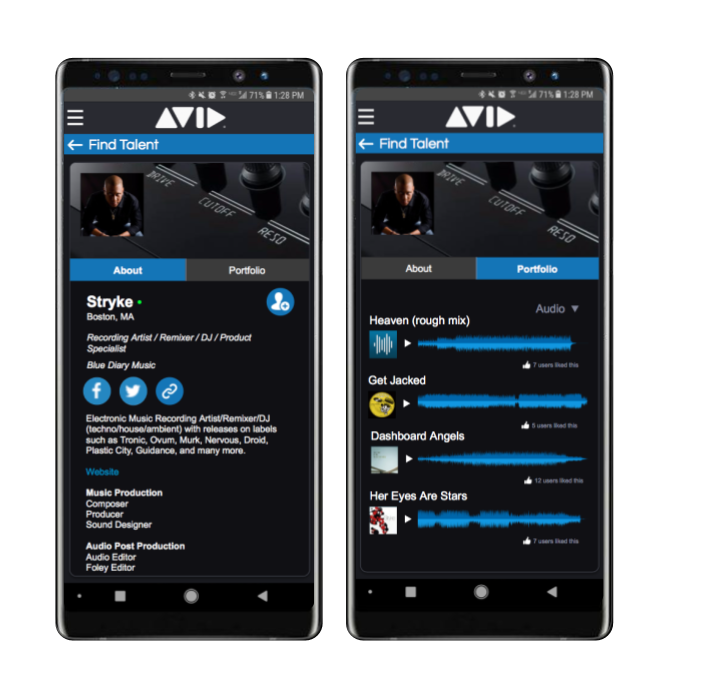
A look at the upcoming Avid Connect app, intended to help Pro Tools users link in to the larger Avid ecosystem.
What are the metrics that you have for adoption and overall use of both Cloud Collaboration and Avid Connect? What are those numbers telling you right now?
Well, not all the numbers we make public. And because we are a public company, I have to be careful on what numbers we make public or not. I will say Pro Tools subscriptions are our fastest-growing market that we have. As far as the Avid Customer Association, that has been hitting record numbers. The last Avid Connect was over 1400 attendees, which is our highest-attended Avid Connect. And our membership of the Avid Customer’s Association, which harnesses the energy of our community and gives them a loud voice collectively, that’s surpassed 25,000.
We definitely aren’t doing everything we need to do for our community, but trend-wise, I think it’s going in the right direction. We’re seeing a lot of growth in this community, not only in the audio and music space but also just in general around all of our creative tools. Those metrics help us have the heavy resolve that we have, where we double down on this community.
Are you seeing an increase specifically in use of the Cloud Collaboration tools?
Yes, we are. You know, some people say to us, “I can just do that on Dropbox,” or whatever other tool they use, but I think they say that until they’ve used it [Avid Cloud Collaboration]. Once they’ve used it, then they realize, “Oh wow. There’s something special here.” So, yes, we’re continuing to see growth, and on any given day, the number of people that are collaborating in the system continues to grow every month, every quarter.
Communicating with Users
How would you characterize Avid’s current vision for Pro Tools? In what ways can users expect the platform to further evolve in the near future?
Anything that we can do to help people really empower people’s creativity to give them the kinds of tools that they need, to do more and really to push the boundaries of what’s possible today, you’ll continue to see us invest in whether it’s for mixing, recording, or music creation.
I don’t want to spill the beans on what exactly we’re doing, but I think everybody should stay tuned for a lot there. I will say we do see a lot of opportunities around the Pro Tools environment, around other types of software tools and especially some hardware interfaces that we see opportunities where Avid could be doing more, and we will be.
It sounds like what you’re saying regarding hardware is that, even though the popular mentality is to forget about anything physical in the plant, that you’re not taking your eye off that segment.
I think software’s important. Especially in the audio and media creation spaces, Pro Tools is the center of that universe. So, whatever we do is to help support the Pro Tools strategy.
I wouldn’t just build hardware for the sake of hardware, but any software or hardware requirements that we think will help our customer base or our user base perform better or do their work better around Pro Tools, we’ll pursue it. Especially when we think we have a unique proposition or unique capability to bring it to the market, we will.
But I would say that if there is any view that we would not develop hardware it’s untrue, and I would just tell people to stay tuned. We obviously have a lot hardware around Pro Tools today, between FX and HD and HDX etc… and Artist Series, but I think there’s more we could be doing, and I think that people will see us do more here in the coming 12 to 18 months.
Jeff, I know you’re aware that making negative comments about Avid, in forums or face-to-face in real life, is a pretty popular sport among the audio community. Where do you think that comes from — is it something that just comes with territory of being a market leader? And is it something that Avid is striving to change?
I think it does come with the territory, you know? In some ways people will complain about the fact that there are these forums or blogs where people will be very open or honest, but personally I like that. I think it’s great that our users can actually quickly and easily communicate to the company both about things that they’re seeing that they like that they want us to do more of, or things that they don’t like that they want us to change.
I think they’re a great opportunity, obviously. Now, I do also worry that people will just rant and rave on a forum and not necessarily make it constructive, I think that’s where we try to use the Avid Customer Association to hopefully harness that energy. That’s why, as an example, there’s the vote that we do with the Avid Customer Association. There are, I think, over a hundred things that we’ve developed specifically because they were asked for in the vote, and we see a lot of energy from the community around a given issue.
While I think forums and blogs are nice vehicles for people to air their views, I also think it’s better if that can be constructively put behind what we do with the vote, or harness the energy of the community and what they’re really looking for. Because all we’re trying to do is try to develop solutions that help our user community. That’s all we’re trying to do. And any way that we can help do that better, we’re going to support.
There’s a lot of passion in our user base. We are a big brand and with that comes, obviously, a history. And we have a passionate community, but none of us take offense. We listen to it, we pay attention, even if people don’t think we do, we do. And hopefully, we’ll continue to make that more and more constructive for our users and for the company.
You mentioned some features that were added to Pro Tools as a result of these votes. Are there a couple that you can point to specifically?
I can tell you that the music creation workflow improvement that we’ve been making, there were a few. We do continuous releases, so every release has something new. But I know the ones that we’ve done at NAMM, and since NAMM, a majority of that came out of the Customer Association vote. We’re just getting started on workflow improvement for music creation. The response it’s seen so far has been terrific.
Kindred Companies
Jeff, you said you were with the company five years before becoming CEO. What’s the difference between doing anything else at Avid and being the CEO?
(laughs) Well, being the CEO, ultimately you’ve got to look at yourself. We have a board of directors, but obviously as the CEO I’ve got to make sure that we’re, as a company, heading in the right direction and we’re making the right strategic choices, and I’ve got the right leadership in place. There’s responsibilities I have as the CEO to lead the company, but I’m just a member of the team trying to do the right thing for our business and for our community. It’s obviously more responsibility, more work to do, but I love doing it.
Here’s my last question. What are some examples of companies outside of Avid’s vertical that you admire? What lessons have you taken from their growth that you might in turn apply to Avid?
I’ve watched a lot of companies. I’m a big Apple user, so I love Apple. But the one that’s really got my attention is actually Microsoft. I learned a lot about this when we were doing the partnership work around our cloud strategy, and if you remember we a little bit over a year ago announced our partnership with Microsoft — that happened because of what we saw from that company. If you look at where Microsoft was a few years ago, and then where the new CEO Satya Nadella took over the company, three or four years ago, what he and that leadership team and that whole organization have done with Microsoft in the last few years, it is breathtaking how they’ve reshaped that company.
They’re in the middle of it, they have more to do. But the performance of that company, the share price, and more importantly look at what they’ve done in going from traditional software licensing company to becoming now the number two in cloud and they’re gunning for number one. For me it’s been remarkable to see that company change and refocus — it’s definitely not your father’s Microsoft.
- David Weiss
Please note: When you buy products through links on this page, we may earn an affiliate commission.







